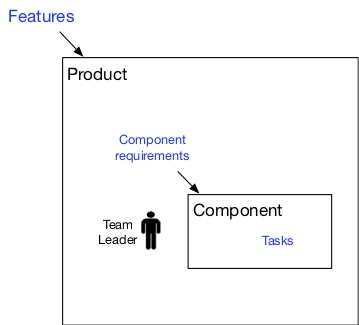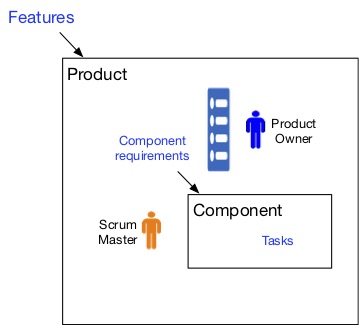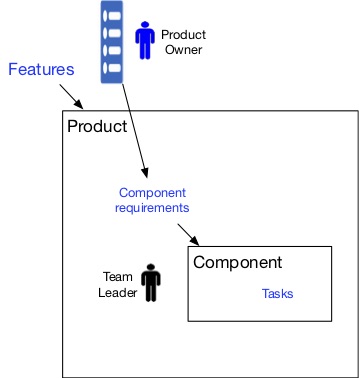(Originally published by Lv Yi on June 3, 2018)
[Team Leader = TL; Product Owner = PO; ScrumMaster = SM]
Real Scrum requires significant organizational redesign. I have seen two common settings to pilot Scrum: 1) project group and 2) component team. As those are existing structures, it is convenient to just use them. However, without organizational redesign, you would end up with fake Scrum.
In this article, we focus on the organizational setting with component teams, and discuss two alternatives before we are ready for organizational redesign to adopt real Scrum.
Here is the starting point.

Let me clarify some terms I use here:
Traditionally, TL is responsible for the component team and is held accountable for delivery of the component work.
This is what usually happens while adopting Scrum for a component team.

Of course we introduce the roles of SM and PO, right? As there used to be one TL, I have seen two common arrangements:
Usually, regardless of whether the TL becomes the PO or SM, the delivery accountability is still kept with the TL.
Those are good progress. However, in both cases, focus on the component misses the most important point behind real Scrum – maximizing the value through inspection and adaptation based on features and whole product perspective. Therefore, this is fake Scrum with a team PO.
An alternative I would recommend is to keep the TL role, but transform the role to 1) do the fake Scrum on the component, 2) shift focus to the product and features, and 3) advocate for organizational redesign.

Let me elaborate:
This approach better follows big ideas behind Scrum, even though Scrum roles are missing. Therefore, this is the real “Scrum” with TL.
Only after the organizational redesign and creation of feature teams, the team would work directly with the real PO, and it would take end-to-end responsibility for feature delivery. Eventually, the TL would be replaced by a SM – a coaching role not responsible for the delivery. That would be the real Scrum.
In fact, TL working this way is well defined in the book Leading Self-Directed Work Teams. It describes the TL role as a boundary manager. Please, do not introduce team PO for a component team, TL will do.